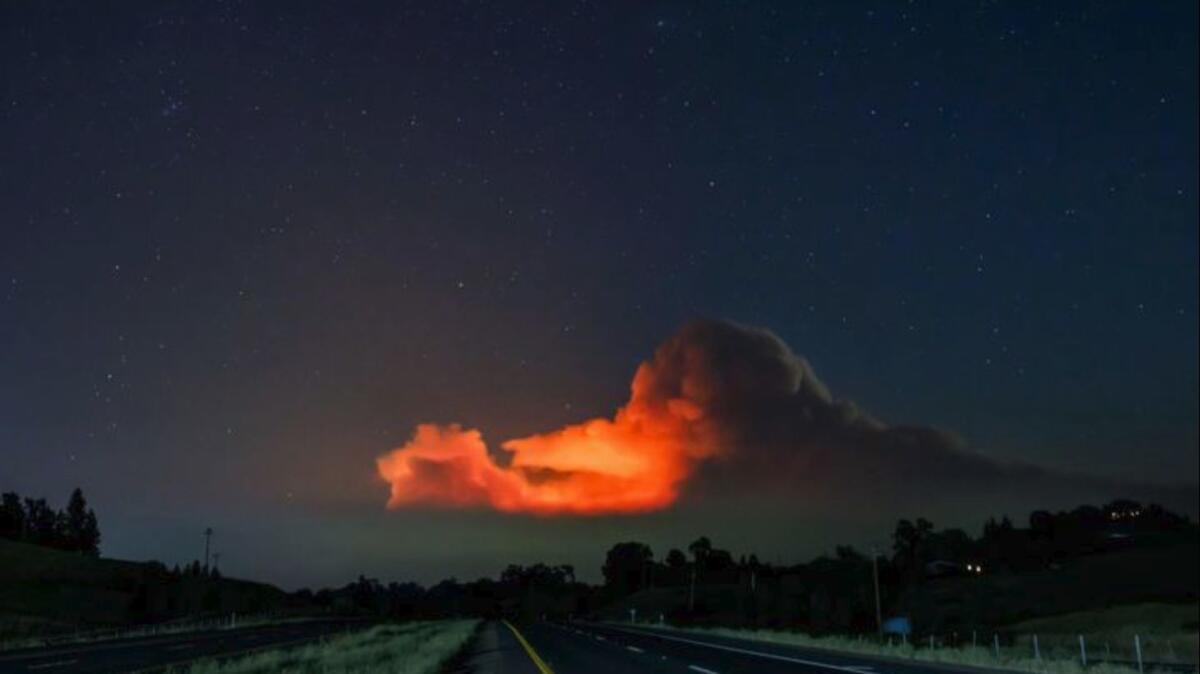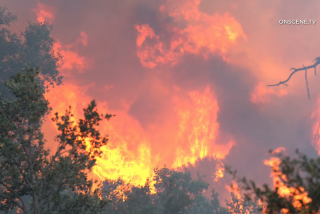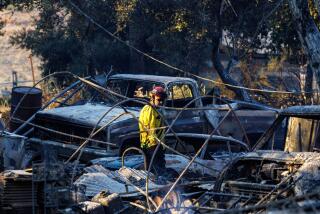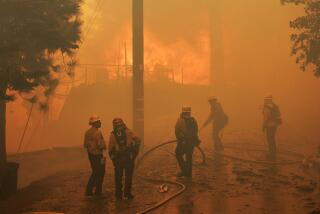How Mendocino Complex became California’s monster fire

The Mendocino Complex fire has burned its way into the history books as the biggest fire ever recorded in California.
That is saying something given how destructive the fire year has been in the state.
But that distinction needs to be put in context. The fire, while massive, has destroyed far less property than other recent infernos. The wine country fires last year, while smaller in size, killed more than 40 people and destroyed thousands of homes.
The Mendocino Complex fire has burned more than 283,000 acres and was only 30% contained Monday night.
Why did this fire explode the way it did?
Like many recent fires, the Mendocino Complex fire was fueled by heat, bone-dry conditions and wind.
In its 12-day march, it has jumped across at least four creeks, one major road and a fire line cut by a bulldozer in a single six-mile run.
Typically, any one of those breaks could have halted the spread of the fire. But shifting winds and brittle-dry vegetation sent flames — up to 300 feet high in some areas — leapfrogging in all directions in three Northern California counties and on both sides of scenic Clear Lake, past these man-made and natural obstacles.
So is this one fire or two?
The Ranch and River fires, at 235,000 and 48,800 acres, respectively, make up the stubborn Mendocino Complex fire. One is burning to the north of Clear Lake, the other to the west. While the two blazes have not united, they broke out an hour apart and fire officials have been treating them as one event.
Full coverage: California’s summer siege of wildfires »
What kind of damage is the fire causing?
For the most part, the Mendocino Complex fire has been burning into forest area and away from homes. Fewer than 100 structures have been lost and no fatalities have been reported. By contrast, the Carr fire in Redding burned more than 100 homes and killed six people.
Why is the area around Clear Lake so susceptible to fire?
Lake County has been particularly hard hit by wildfire in the last five years. Two years ago, the Clayton fire tore through almost 4,000 acres and 300 structures, many of them mobile homes and rentals. The blaze hit the town of Lower Lake particularly hard, destroying a 150-year-old church and a Habitat for Humanity office. In 2015, three wildfires ripped through Lake County, including the Valley fire, which destroyed more than 1,300 homes and killed at least four people.
UCLA climate scientist Daniel Swain cited several factors for the destruction in Lake County: explosively flammable vegetation, warm overnight temperatures and the lingering effect of years of drought.
“This is a part of the state that I think that overnight temperatures have played an enormous role,” Swain said. “It’s sort of this middle elevation where you’re above the marine layer but you’re not high enough in the mountains to really cool down either. So you’re sort of in this zone where fires can burn, with the increase in temperatures, as we’ve seen, all day and all night.”
How does the Mendocino Complex compare to other big California fires?
2. Thomas fire — 281,000 acres
December 2017
Counties: Ventura and Santa Barbara
Cause: Under investigation
Structures destroyed: 1,063*
Deaths: 2
3. Cedar fire — 273,246 acres
October 2003
County: San Diego
Cause: Human-related
Structures destroyed: 2,820
Deaths: 15
3. Rush fire — 272,200 acres
August 2012
County: Lassen
Cause: Lightning
Structures destroyed: 0
Deaths: 0
* 271,911 acres burned in California; 43,666 burned in Nevada
4. Rim fire — 257,314 acres
August 2013
County: Tuolumne
Cause: Human-related
Structures destroyed: 112
Deaths: 0
5. Zaca fire — 240,207 acres
July 2007
County: Santa Barbara
Cause: Human-related
Structures destroyed: 1
Deaths: 0
More to Read
Sign up for Essential California
The most important California stories and recommendations in your inbox every morning.
You may occasionally receive promotional content from the Los Angeles Times.













